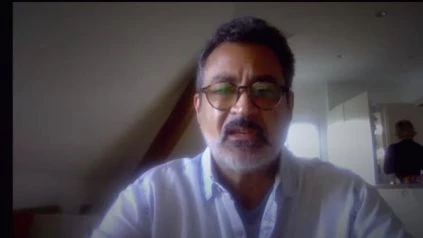Charles Limoli, Ph.D. of the University of California Irvine explains Cancer treatment without side effects? UCI, Swiss researchers eliminate brain tumors without damaging cognition.
Irvine, Calif., Oct. 27, 2020-The holy grail of oncologists has long been the treatment of cancer without crippling side effects, and researchers at the Lausanne University Hospital / University of Lausanne (CHUV / UNIL) of the University of California, Irvine and Switzerland may have discovered it.
In order to remove brain tumors in mice, Charles Limoli, UCI professor of radiation oncology, and Marie-Catherine Vozenin, associate professor of radiation oncology at CHUV / UNIL, used an ultra-high dose intensity of radiation therapy, bypassing main side effects typically caused by cranial irradiation. Their reports are published in Studies on Clinical Cancer.
Standard radiation therapy exposes the tumor and surrounding normal tissue to radiation for several minutes at a time, but FLASH-RT allows the same dose to be delivered in as little as 10 seconds. The pace removes many of the toxicities that typically affect survivors of cancer long after radiation therapy, greatly reducing side effects such as inflammation and cognition impairments.
The researchers fractionated the dose, as in conventional radiation therapy, and split the amount over multiple sessions. Using FLASH-RT, they found that at faster dose speeds, the same total dose of radiation administered killed brain tumors just as effectively as the conventional process.
FLASH-RT has also been used to treat lung, skin, and intestinal cancers while still avoiding many radiation-induced complications, although this study has focused on the brain. These additional experiments, including fish, mice, pigs, cats, and one human subject, have been successful in several animal types.
Now that researchers have confirmed that the approach works, groups are designing devices around the world that would make FLASH technology usable in clinics. In the U.S. and Europe, one system awaits approval, and Vozenin aims to use it early next year in two clinical trials at CHUV.
She and Limoli are, meanwhile, exploring the processes behind the beneficial effects of FLASH-RT to better understand how the technology functions.

